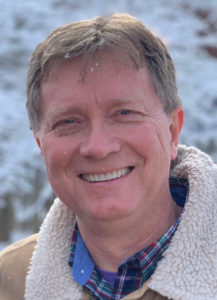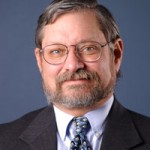SC 6-8 was formed, statement of work finalized, and the project was initiated April 17, 2012. The Committee prepared a peer-review report on documents submitted by DTRA related to the Operation Tomodachi radiation dose assessments produced by DARWG to address potential radiation exposures to U.S. Forces Japan subsequent to the Fukushima Daiichi nuclear reactor accidents in 2011. The focus of the peer review was on the adequacy of assumptions, technical approach, and other factors that impact the scientific accuracy of the reports produced.
The Committee’s kickoff meeting was held May 1 and 2, 2012 at NCRP, Bethesda, Maryland. In addition to the Committee members, the meeting was attended by members of DARWG and NCRP staff. As a starting point, the model of an NCRP peer-review document, SC 6-7 final report, was used. A web folder was created and populated by DTRA/DARWG documents, general references, and draft Committee documents. A process for Committee status updates and website postings of interest was developed. An early task was to complete initial comments on DARWG draft post-3/11 technical proposal [DARWG-TP-12-01 Version 1.2 (April 19, 2012)], which was completed on May 16, 2012. A phone conference was held on May 29, 2012 to discuss the approach for initial comments on the DARWG draft technical report “Initial Upper-Bound Radiation Dose Assessments for Shore-Based Individuals in Operation Tomodachi (DTRA-TR-12-001).
A second Committee meeting was held June 20–21, 2012 at NCRP and was attended by Committee members and NCRP staff. At that meeting, a draft initial comments document on DTRA-TR-12-001was prepared. Committee members provided final comments on the draft on June 23, 2012. The consolidated report was finalized by the Chair and NCRP Staff Consultant and provided to the NCRP Secretariat on June 24, 2012. The NCRP Secretariat provided the completed initial comments report to DTRA on June 25, 2012. On July 13, 2012 the DARWG response to the initial comments on DTRA-TR-12-001 were received. On September 5, 2012 DTRA announced the public Operation Tomodachi Registry website was available. On November 1, 2012 the Committee provided comments on the Operation Tomodachi Registry website to DTRA. The revised DTRA-TR-12-001 was posted on the public website in October 2012.
A third Committee meeting was held October 16–17, 2012 at NCRP and was attended by members of DARWG and NCRP staff. At that meeting, a revised DTRA-TR-12-001 report was provided for follow-on review as well as draft documents DTRA-TR-12-02, DTRA-TR-12-004, DTRA-TR-12-017, and DARWG-TM-12-003. These reports were peer reviewed per the following:
- Radiation Dose Assessments for Shore-Based Individuals in Operation Tomodachi(DTRA-TR-12-001); the September 30, 2012 revision was reviewed and comments provided to DTRA on November 7, 2012.
- Probabilistic Analysis for Operation Tomodachi Radiation Dose Assessment (DTRA-TR-12-02); a revised version dated October 15, 2012 was reviewed and comments provided to DTRA on December 10, 2012.
- Radiation Internal Monitoring by In Vivo Scanning in Operation Tomodachi(DTRA-TR-12-04); the October 11, 2012 version was reviewed and comments provided to DTRA on December 14, 2012.
- Radiation Dose for Embryo, Fetus and Nursing Infants from Operation Tomodachi (DTRA-TR-12-17); the October 5, 2012 version was reviewed and comments provided to DTRA on January 1, 2013.
- Evaluation of Difference in Response of DOD Portable Instruments and Solid-State Detectors Used by MEXT for Measurement of External Radiations with Attention to the Cosmic Radiation Component (DARWG-TM-12-003); the revised version dated November 28, 2012 was reviewed and comments provided to DTRA on December 29, 2012.
A second phone conference was held on November 29, 2012 during which discussion focused on comments for DTRA-TR-12-002 and DTRA-TR-004 reports. On December 3, 2012, DTRA provided the document “Comparison of Radiation Dose Studies of the 2011 Fukushima Nuclear Accident Prepared by the World Health Organization and the U.S. Department of Defense” (DTRA-TR-12-048). On December 21, 2012 a third phone conference was held during which discussion focused on DTRA-TR-12-17 and next steps in the peer review process. During the third phone conference it was decided to integrate any comments the Committee might have on DTRA-TR-12-048 into the Committee’s final report.
On January 1, 2013 the NCRP Secretariat provided the completed informal comments on the partially completed DTRA-TR-12-17 report to DTRA. On February 11, 2013 DTRA provided, for information only, the draft technical report “J-Village Radiological Environment in Operation Tomodachi” (DTRA-TR-12-045), the DTRA document “DOD’s Response to OSTP Fukushima Sharing Forum Questions” (February 7, 2013), and the revised “Radiation Dose Assessments for Shore-Based Individuals in Operation Tomodachi” (DTRA-TR-12-001 as revised February 2, 2013). Further, DTRA provided a revised draft report “Radiation Dose Assessments for the Embryo, Fetus and Nursing Infant during Operation Tomodachi” (DTRA-TR-12-017, revised) for additional peer review. A fourth Committee meeting was held February 19–20, 2013 at NCRP and was attended by members of DARWG and NCRP staff. At that meeting, DARWG provided a series of presentations regarding the current project schedule and feedback on the use of Committee comments in revising several draft documents. A key issue identified during this meeting of the Committee was the delay in production of the DTRA report “Radiation Doses for Fleet and Air Individuals in Operation Tomodachi” (DTRA-TR-12-041) and the need for further dose information for the Committee to complete comments on the revised draft DTRA-TR-12-017 report. On February 22, 2013, DTRA provided an updated DTRA-TR-12-017 (revised) report with completed dose information for peer review.
On April 1, 2013 DTRA provided SC 6-8 the draft report entitled “Radiation Doses for Fleet-Based Individuals in Operation Tomodachi” (DTRA-TR-12-041)” for initial review and comments. NCRP held three webinar/teleconferences and provided initial comments back to DTRA prior to April 16, 2013. DTRA then provided NCRP a revised draft on May 8, 2013. NCRP provided final comments to DTRA on June 13, 2013. On September 30, 2013 DTRA published DTRA-TR-12-041 and provided a document to NCRP that listed how NCRP comments had been addressed.
On April 2, 2013,NCRP provided final comments on the renamed report “Radiation Dose Assessments for Embryo, Fetus, and Nursing Infant during Operation Tomodachi” (DTRA-TR-12-017). In August DTRA published DTRA-TR-12-017 and provided a document to NCRP that listed how NCRP comments had been addressed.
On September 4, 2013 DTRA published “Radiation Internal Monitoring by In Vivo Scanning in Operation Tomodachi,” (DTRA-TR-12-004) and provided a document to NCRP that listed how NCRP comments had been addressed.On September 30, 2013 DTRA published “Radiation Dose Assessments for Fleet-Based Individuals in Operation Tomodachi,” (DTRA-TR-12-041) and provided a document to NCRP that listed how NCRP comments had been addressed.
On October 1, 2013 DTRA published “Operation Tomodachi Registry: Radiation Data Compendium” (DTRA-TR-13-044) with a copy to the NCRP.
DTRA provided a draft of Radiogenic Thyroid Cancer Risk Assessment in Operation Tomodachi (DARWG-TM-12-04) on March 14, 2014 with a follow-up revised version on March 19, 2014. DTRA is continuing the work of DARWG in calendar year 2014. A teleconference was held on March 28, 2014 to discuss the key issues associated with that report. The Committee’s consolidated draft response to DARWG-TM-12-04 was completed and submitted to DTRA on April 29, 2014.
DTRA provided the final version of Evaluation of Differences in Response of DOD Portable Instruments and Solid-State Detectors used by MEXT for Measurement of External Radiations with Attention to the Cosmic Radiation Component (DTRA-TR-14-001) on April 11, 2014. DTRA provided for general comment by the Committee a document, NCRP Citations in draft ASD (HA)’s Report to Congress on USS Ronald Reagan Sailors, on April 17, 2014. DTRA provided to Congress on June 19, 2014 the final report to the Congressional Defense Committees in response to the joint explanatory statement accompanying the DOD Appropriations Act, 2014, page 90, “Radiation Exposure” with a copy to the Committee. DTRA provided an updated schedule of DARWG activities on July 31, 2014.
A response to the NCRP comments on DARWG-TM-15-04, a document on Lessons Learned from Operation Tomodachi for information only is expected to be provided in the first quarter of 2015. DTRA completed the report Radiogenic Thyroid Cancer Risk Assessment for Operation Tomodachi (DTRA-TR-14-068) before the end of 2014. The newly developed document Temporal Correlation Analysis of OTR Website Visits (DARWG-TM-15-03) was published on December 1, 2014, with a copy expected to be provided to NCRP.
On June 10, 2015, DTRA provided NCRP (for information only) a copy of a new document Analysis of Air Activity Concentration Data Collected in the Kanto Plain, Japan, Following the 2011 Fukushima Daiichi Nuclear Accident (DRTRA-TR-15-008). The Committee is anticipating completion of an NCRP summary document on the Operation Tomodachi peer review by the beginning of the first quarter of 2016.
This work was funded by the Defense Threat Reduction Agency.
The membership of SC 6-8 is:

JOHN E. TILL is president Risk Assessment Corporation (RAC) (www.racteam.com). He graduated from the U.S. Naval Academy 1967. He served in the U.S. Navy Nuclear Submarine Program and retired a Rear Admiral in the U.S. Naval Reserve in 1999. As a reserve flag officer he served as Deputy Commander Submarine Force Atlantic Fleet and Deputy Commander US Strategic Command and Commander Naval Reserve Readiness Command Region TEN. He is a recipient of Department of Defense Distinguished Service Medal, the Legion of Merit, two Navy Meritorious Service Medals, two Navy Commendation Medals, and the Navy Achievement Medal. Following his active duty service, Dr. Till received his MS degree from Colorado State University in 1972 and his PhD degree from the Georgia Institute of Technology in 1976. In 1977 he formed RAC. Since its formation RAC has played a key role in our understanding of radioactive materials when they enter the environment and how they affect humans. He has been responsible for major historical dose reconstruction projects at U.S. Department of Energy (DOE) facilities including Hanford, Washington, Fernald, Ohio, Rocky Flats, Colorado, the Savannah River site, and Los Alamos National Laboratory. Working with Vanderbilt University and National Cancer Institute, Dr. Till’s team developed the first in-depth dosimetry from exposures to military personnel who participated in the atmospheric testing of nuclear weapons between 1945 and 1963. Working with epidemiologists, Dr. Till team of researchers is enabling us to better understand if there is a higher incidence of cancer among this group of over 114,000 veterans. In 1995, Dr. Till received the E.O. Lawrence Award from DOE in the field of Environmental Science and Technology. He was selected for this honor for his work in public involvement and research in dose reconstruction. He was presented the L.S. Taylor Medal and presented the Taylor Lecture at the annual meeting of NCRP in 2013. In 2020, he received the Health Physics Society’s Distinguished Scientific Achievement Award. Dr. Till’s scientific achievements include over 200 scientific publications and books that stress new approaches to apply and simplify transport and fate mechanisms in environmental and risk analysis. His most recent book, Radiological Risk Assessment and Environmental Analysis was published by Oxford University Press. He served on the International Commission on Radiological Protection (ICRP) for 12 y and worked with the International Atomic Energy Agency on various regulatory reports. He is a Distinguished Emeritus Member of NCRP and has served on and chaired various committees of the National Academy of Sciences. |

A. IULIAN APOSTOAEI
is a senior scientist at Oak Ridge Center for Risk Analysis, Oak Ridge, Tennessee and an adjunct professor in the Nuclear Engineering Department at University of Tennessee. He has more than 30 y of experience in radiological dose and risk assessment, and contributed to projects for different national and international organizations and agencies including National Institute of Occupational Safety and Health (NIOSH), National Cancer Institute (NCI), NCRP, U.S. Environmental Protection Agency, National Aeronautics and Space Administration (NASA), International Commission on Radiological Protection (ICRP), International Atomic Energy Agency, and United Nations Scientific Committee on Effects of Atomic Radiation. He is a co-author on NCRP Report No. 164 and ICRP Publication 150. Dr. Apostoaei participated in numerous retrospective and prospective dose and risk assessment studies of (1) individuals exposed to historic releases of radionuclides from Oak Ridge Reservation in Tennessee, Hanford Site in Washington, and Idaho National Engineering Laboratory in Idaho, (2) members of public exposed to nuclear weapons fallout in the United States and the Marshall Islands, or (3) astronauts exposed to space radiation. He performed reviews of scientific information on various topics related to radiation dose assessment models and dose-response analyses in epidemiological studies. External and internal dosimetry are areas of key interest for him. He participated in the development of an Internal Dose Estimation computer software Package (InDEP) to analyze bioassay data and calculate organ doses in workers exposed to plutonium and uranium by inhalation or ingestion, and of a new Fluoroscopy X-rays Organ-Specific Dosimetry System (FLUXOR) for historic exposures of patients to chest fluoroscopies. He also specializes in evaluation of various types of radiological risk (e.g., lifetime risk, probability of causation, years of life lost), and he contributed to the design, building and maintenance of several known radiation risk assessment tools, including NCI/NIOSH Interactive Radio-Epidemiological Program, NCI’s Radiation Risk Assessment Tool (BEIR VII/RadRAT), or NASA’s Risk Assessment Environment. He has extensive expertise in methods for propagation and analysis of uncertainties. |

WILLIAM E. KENNEDY, JR. has extensive experience as a project manager, task leader, and individual contributor covering a broad range of health physics and nuclear engineering topics. He received his BS and MS degrees in Nuclear Engineering from Kansas State University. Mr. Kennedy has been involved in the development of environmental pathway and radiation dosimetry models used to assess potential health and environmental impacts that resulted from releases of radionuclides to the environment. He specializes in the use of these models in environmental dose reconstruction, radioactive materials transport, radioactive waste disposal, and evaluation of nuclear facility operating practices. Over the past 37 y, Mr. Kennedy has led and contributed to a variety of projects for the U.S. Nuclear Regulatory Commission, the U.S. Department of Energy, the Electric Power Research Institute, and private industry. He has been involved with development of the technical basis for revised standards and regulations, and serves as the chair of ANSI/HPS N13.12, Surface and volume Radioactivity Standards for Clearance. He served as a consultant to the International Atomic Energy Agency (IAEA), Vienna, Austria, and was a member of the IAEA Advisory Groups to evaluate the Derivation of Exempt Quantities for Application to Terrestrial Waste Disposal and Derivation of Exempt Quantities for Recycle of Materials from Nuclear Facilities. He was an invited lecturer for IAEA training courses on Management of Radioactive Waste from Nuclear Power Plants at Argonne National Laboratory; on Safety Assessment Modeling for Low and Intermediate Radwastes in Rio de Janeiro, Brazil and in Cairo, Egypt; and on Environmental Monitoring in Kiev, Ukraine. In 1990, he received the Health Physics Society's (HPS) prestigious Elda E. Anderson Award. He served as a member of the HPS Board of Directors from 1998 through 2001 and was selected as a fellow of the society in 2002. He was a member of the U.S. delegation to the 10th Congress of the International Radiation Protection Association in Hiroshima, Japan. |
 J.R. Mercier, Advisor J.R. Mercier, Advisor |
 M.P. Grissom, Staff Consultant M.P. Grissom, Staff Consultant |


 News & Events
News & Events